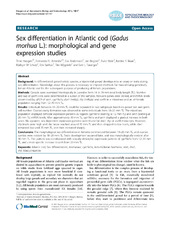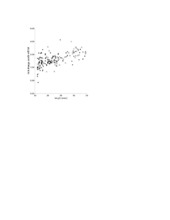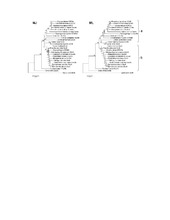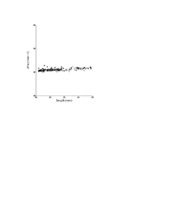| dc.contributor.author | Haugen, Trine | eng |
| dc.contributor.author | Almeida, Fernanda F. L. | eng |
| dc.contributor.author | Andersson, Eva | eng |
| dc.contributor.author | Bogerd, Jan | eng |
| dc.contributor.author | Male, Rune | eng |
| dc.contributor.author | Skaar, Katrine Sandnes | eng |
| dc.contributor.author | Schulz, Rüdiger W. | eng |
| dc.contributor.author | Sørhus, Elin | eng |
| dc.contributor.author | Wijgerde, Tim | eng |
| dc.contributor.author | Taranger, Geir Lasse | eng |
| dc.date.accessioned | 2014-11-06T12:41:59Z | |
| dc.date.available | 2014-11-06T12:41:59Z | |
| dc.date.issued | 2012-06-18 | eng |
| dc.identifier.issn | 1477-7827 | en_US |
| dc.identifier.uri | https://hdl.handle.net/1956/8715 | |
| dc.description.abstract | Background: In differentiated gonochoristic species, a bipotential gonad develops into an ovary or testis during sex differentiation. Knowledge about this process is necessary to improve methods for masculinizing genetically female Atlantic cod for the subsequent purpose of producing all-female populations. Methods: Gonads were examined histologically in juveniles from 14 to 39 mm total body length (TL). Number and size of germ cells were determined in a subset of the samples. Relevant genes were cloned, and mRNA levels determined by qPCR of amh, cyp19a1a; dax1 (nr0b2); shp (nr0b2a) and sox9b in a mixed-sex and an all-female population ranging from 12–49 mm TL. Results: Individuals between 14–20 mm TL could be separated in two subgroups based on gonad size and germ cell number. Ovarian cavity formation was observed in some individuals from 18–20 mm TL. The mixed sex population displayed bimodal expression patterns as regards cyp19a1a (starting at 12 mm TL) and amh (starting at 20 mm TL) mRNA levels. After approximately 30 mm TL, cyp19a1a and amh displayed a gradual increase in both sexes. No apparent, sex-dependent expression patterns were found for dax1, shp or sox9b transcripts. However, shp levels were high until the larvae reached around 35 mm TL and then dropped to low levels, while dax1 remained low until 35 mm TL, and then increased sharply. Conclusions: The morphological sex differentiation in females commenced between 14–20 mm TL, and ovarian cavities were evident by 18–20 mm TL. Testis development occurred later, and was morphologically evident after 30 mm TL. This pattern was corroborated with sexually dimorphic expression patterns of cyp19a1a from 12–13 mm TL, and a male-specific increase in amh from 20 mm TL. | en_US |
| dc.language.iso | eng | eng |
| dc.publisher | BioMed Central | en_US |
| dc.rights | Attribution CC BY | eng |
| dc.rights.uri | http://creativecommons.org/licenses/by/2.0 | eng |
| dc.subject | Atlantic cod | eng |
| dc.subject | Sex differentiation | eng |
| dc.subject | Aromatase | eng |
| dc.subject | cyp19a1a | eng |
| dc.subject | Anti-müllerian hormone | eng |
| dc.subject | amh | eng |
| dc.subject | dax1 | eng |
| dc.subject | shp | eng |
| dc.subject | Masculinization | eng |
| dc.title | Sex differentiation in Atlantic cod (Gadus morhua L.): morphological and gene expression studies | en_US |
| dc.type | Peer reviewed | |
| dc.type | Journal article | |
| dc.date.updated | 2013-08-23T09:15:38Z | |
| dc.description.version | Peer Reviewed | |
| dc.description.version | publishedVersion | en_US |
| dc.rights.holder | Trine Haugen et al.; licensee BioMed Central Ltd. | en_US |
| dc.rights.holder | Copyright 2012 Haugen et al.; licensee BioMed Central Ltd | en_US |
| dc.source.articlenumber | 47 | |
| dc.identifier.doi | https://doi.org/10.1186/1477-7827-10-47 | |
| dc.identifier.cristin | 964648 | |
| dc.source.journal | Reproductive Biology and Endocrinology | |
| dc.source.40 | 10 | |




